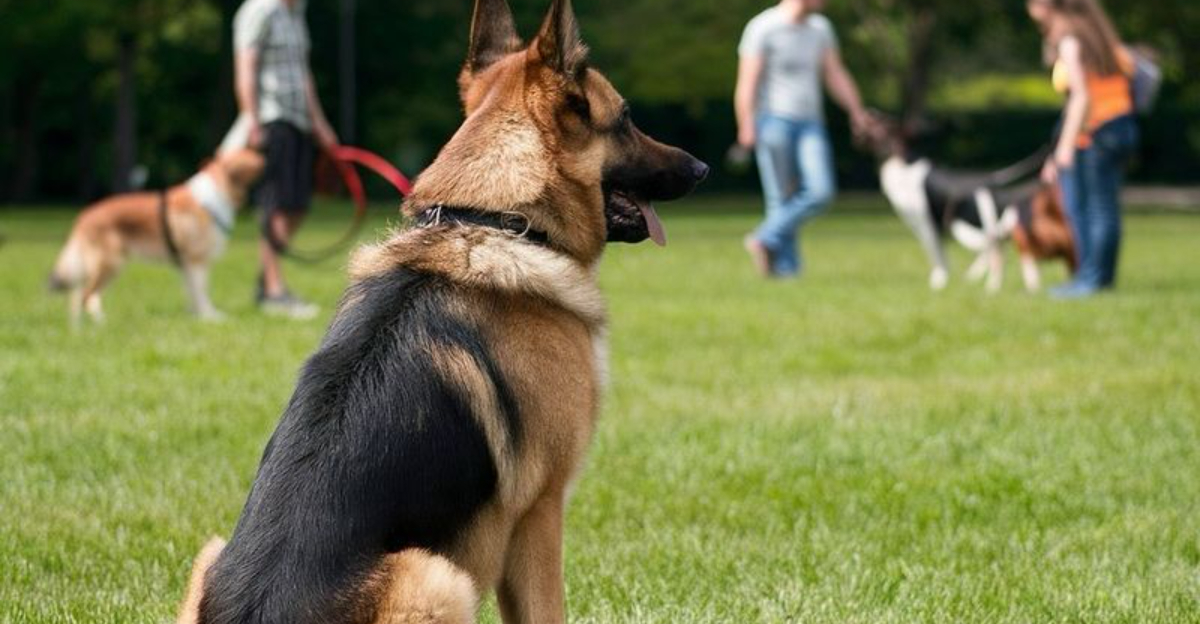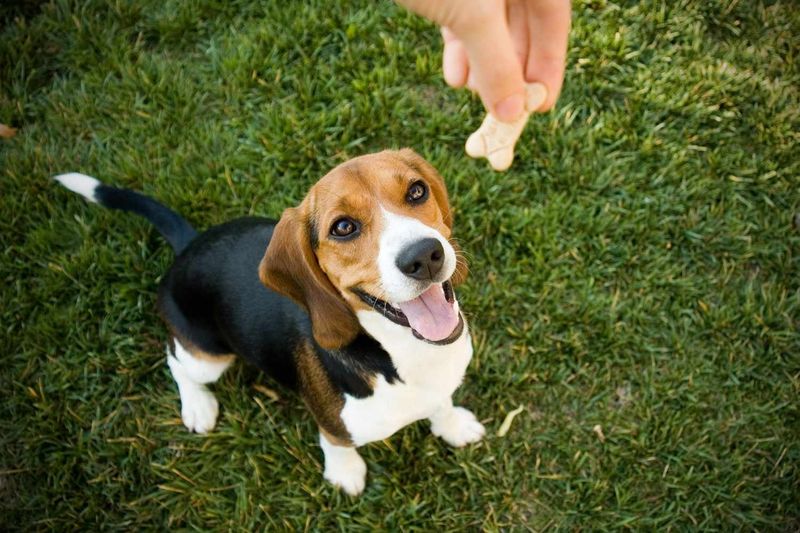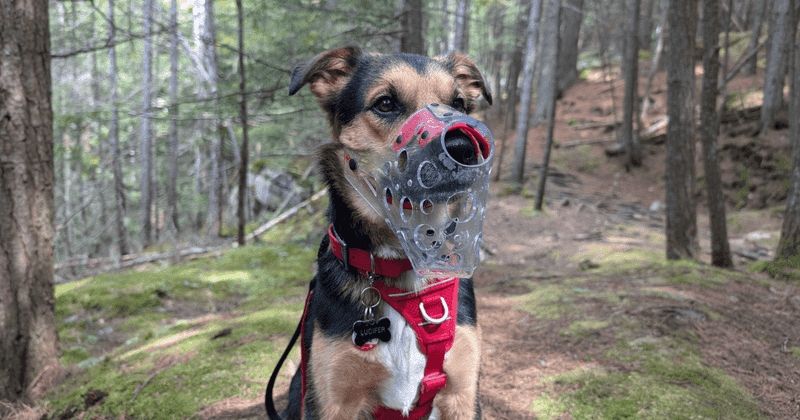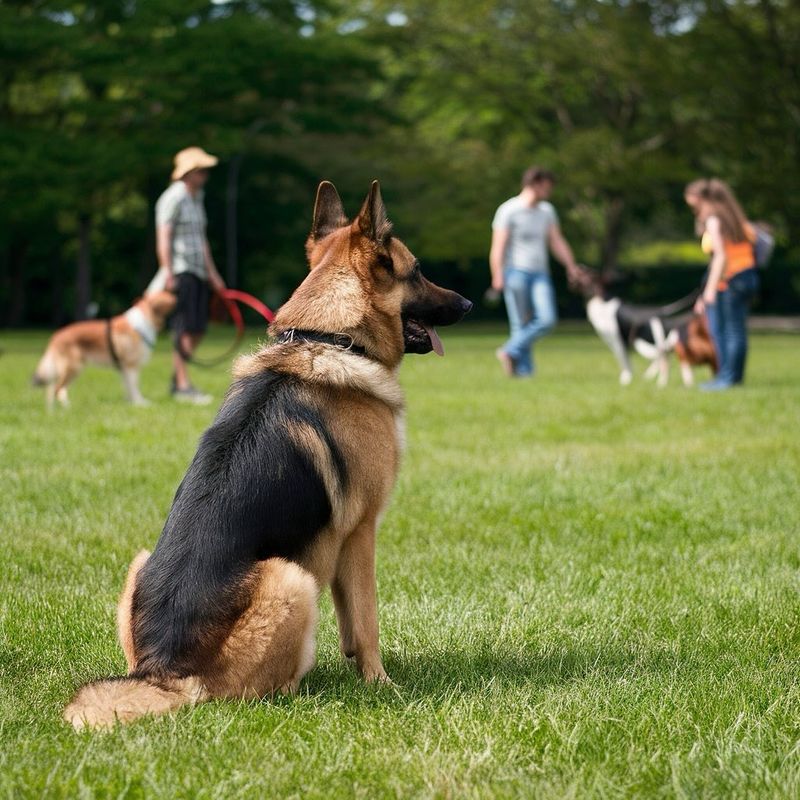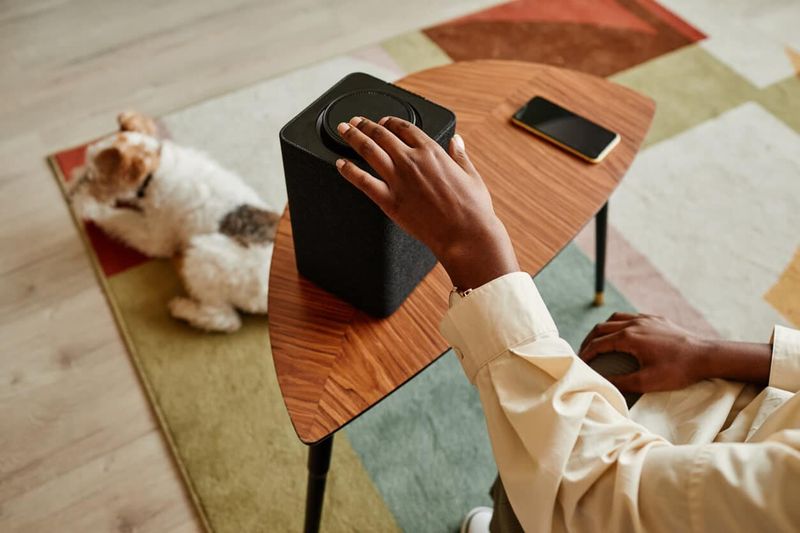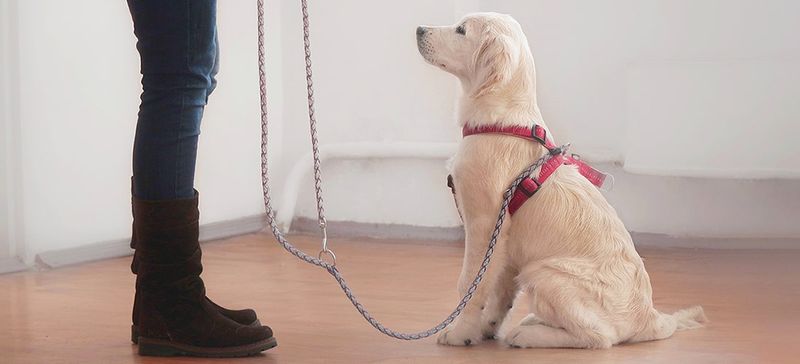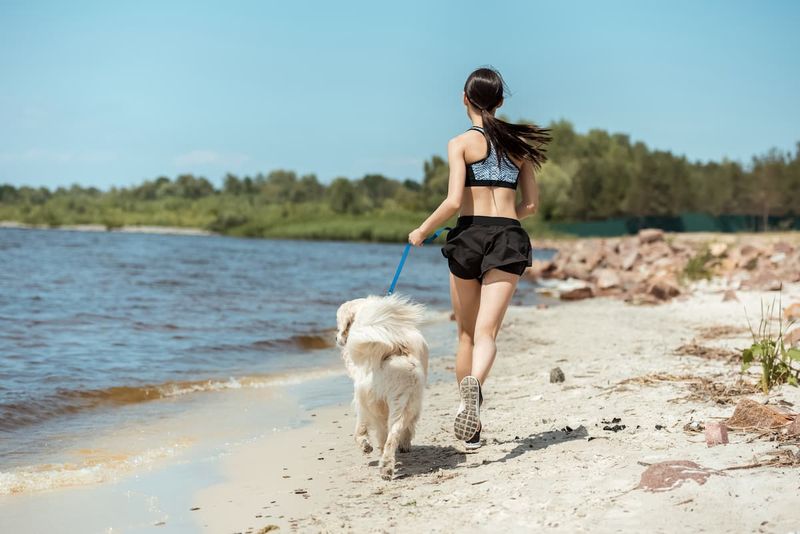Training a dog to remain calm and friendly around strangers is essential for a harmonious life. These 10 steps will guide you through the process, ensuring your dog develops the confidence and manners needed to meet new people gracefully.
Positive Reinforcement
Positive reinforcement is a powerful tool in dog training. Rewarding your dog for calm behavior when meeting strangers reinforces good manners.
Use treats, toys, or verbal praises to acknowledge their calm demeanor. Consistency is key to effective reinforcement, so keep treats handy during walks or visits.
This approach not only strengthens your bond but also encourages your dog to remain composed in various situations. By associating new encounters with positive experiences, your dog learns that staying calm is rewarding, making them more likely to repeat the behavior.
Controlled Exposure
Controlled exposure to new environments is essential for building a dog’s confidence. Gradually introduce your dog to busy places, ensuring they’re on a leash for safety.
Start with less crowded areas and slowly work your way up to busier places. This method prevents overwhelming your dog while fostering adaptability.
Watch for signs of discomfort, and always be ready to retreat to a quieter spot if needed. By providing a controlled environment, your dog learns to handle new situations calmly, enhancing their comfort around strangers.
Early Socialization
Early socialization is crucial for every puppy. Exposing them to different people, environments, and experiences helps build their confidence. A well-socialized puppy is more likely to feel at ease around strangers.
Begin by introducing your puppy to various scenarios, such as parks and busy streets. Allow them to interact with people of all ages and backgrounds. This exposure helps reduce fear and anxiety.
Encourage positive interactions by using treats and praises. Celebrate small victories as your puppy becomes more at ease with new faces. A confident puppy is a happy puppy, eager to explore the world.
Calm Leadership
Dogs often mirror their owner’s behavior. Exhibiting calm leadership helps your dog feel secure and composed. When meeting strangers, stay relaxed and confident.
Use a steady voice and maintain a composed demeanor. Your dog will pick up on these cues, learning to emulate your calmness.
Consistent leadership fosters trust and reduces anxiety. When your dog views you as a calm leader, they’re more likely to respond positively to new interactions, making every encounter with a stranger a pleasant experience.
Desensitization
Desensitization involves gradually introducing your dog to stimuli that may provoke anxiety, such as loud noises or bustling environments.
Start in a controlled setting, like your home, playing recordings of city sounds at a low volume. Gradually increase the noise level as your dog becomes comfortable.
Pair these sessions with treats or playtime to create positive associations. Over time, your dog will learn that these stimuli are not threats, enabling them to remain calm around strangers, even in noisy settings.
Obedience Training
Obedience training is a cornerstone of a well-behaved dog. Teaching basic commands like sit, stay, and come helps manage your dog’s behavior around strangers.
Practice these commands regularly in distraction-free environments before introducing them in public settings. This builds your dog’s discipline and confidence.
When your dog responds well to commands, they are less likely to act unpredictably when meeting new people. A well-trained dog is not only a joy to be around but also an ambassador of friendliness among strangers.
Provide Safe Spaces
Creating safe spaces for your dog offers them a retreat when they’re feeling overwhelmed. Having a designated area where they can relax helps alleviate stress.
Ensure this space is accessible and filled with comforting items like toys or blankets. Encourage your dog to retreat there when needed, especially during visits or gatherings.
Knowing they have a safe haven builds their confidence in social situations, allowing them to interact with strangers at their own pace. This balance of exploration and retreat fosters a calm and friendly demeanor.
Regular Exercise
Regular exercise is vital for a dog’s mental and physical well-being. A well-exercised dog is less likely to exhibit anxiety or restlessness around strangers.
Engage in activities like walks, hikes, or play sessions to expend excess energy. This keeps your dog physically fit and emotionally balanced.
A tired dog is a calm dog, making them more amenable to new encounters. Ensuring they have regular exercise routines contributes to their overall friendliness and adaptability in various social settings.
Mindful Interactions
Mindful interactions involve closely monitoring your dog’s responses to strangers and adjusting your approach accordingly.
Observe body language cues that indicate stress, such as stiff posture or avoiding eye contact. Use these signals to guide introductions, allowing your dog to approach at their own pace.
By respecting their boundaries, you help them build positive associations with new people. This mindful approach fosters a trusting relationship and encourages your dog to remain calm and friendly in diverse social scenarios.
Patience and Consistency
Patience and consistency are key to successfully training a dog to be calm around strangers. Developing these traits in your approach creates a supportive environment for learning.
Training takes time, and setbacks may occur. Stay patient and maintain a consistent routine, reinforcing desired behaviors. Celebrate small achievements along the way.
Your dog’s progress may be gradual, but with unwavering patience and consistent practices, they’ll become more friendly and composed when meeting new people. This journey not only enhances their social skills but also strengthens your bond.
